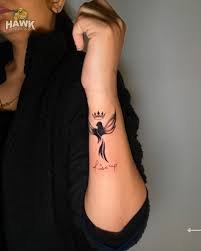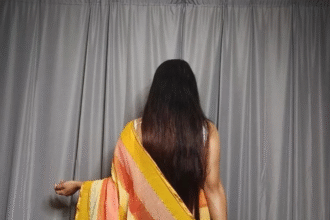Introduction
Finding the right tattoo should feel like a happy adventure. This guide will help you pick a design that fits your style, story, and comfort level. I wrote this to be simple and clear. You will get ideas, tips, and real practical advice. You will learn about styles, placement, pain, and aftercare. You will also read short examples and helpful warnings. Every paragraph keeps language easy to read. Sentences are short and clear. If you are new to tattoos, this piece will feel like a calm chat. If you know tattoos, you will still find fresh ideas and useful reminders. Let’s explore pretty designs, small tattoos, floral art, watercolor looks, and more. We will also cover how to find a good artist and care for your skin.
What makes the best tattoo for girls?
The best tattoo for girls often mixes style and meaning. Think about what you love and what you want to show. A good design fits your body shape and your daily life. It should be something you feel proud to wear. Talk with a tattoo artist about size and placement. Artists help turn an idea into a clean design. Also think about pain, healing, and visibility at work or school. Choose a style that fits your personality, like minimalist, floral, or watercolor. A design with clear lines will age well. Pick images that hold meaning for you, like a name, date, or symbol. This helps the tattoo feel personal and timeless.
Popular styles women often choose
Many women pick styles that feel soft or elegant. Floral tattoos and small tattoos are very popular. Minimalist tattoos and line art look neat and modern. Watercolor tattoos give a soft, painted feel. Script or lettering can carry a short word or phrase. Boho and geometric designs suit a relaxed look. Fine line and delicate tattoos often work for wrists and behind the ear. Aesthetic tattoos and cute tattoos are also trendy. Each style has its own care and touch. Ask an artist for examples of their work in your chosen style. Seeing real photos helps you imagine the final piece. That is how many people find the perfect match for taste and body.
Small and delicate designs that age well
Small tattoos are great for first-timers. They sit well on wrists, ankles, and behind the ear. Tiny tattoos take less time and hurt less for many people. Simple symbols last longer because lines stay crisp. Designs like tiny stars, hearts, and initials look sweet. Minimalist tattoos and tiny floral sprigs fit many wardrobes. Pick a size that fits your skin area. Too small details can blur over years. Bold outlines help keep clarity. Ask your artist what size to use for long life and clear shape. Small pieces are easy to hide or show. They work for students and professionals who need a discreet option.
Floral and nature tattoos: timeless and pretty
Floral tattoos are a classic pick for many women. Flowers show beauty, growth, and memory. Each flower can hold a special meaning. Roses often stand for love. Lavender can mean calm and peace. Leaves and vines flow with your body shape. Floral tattoos can be tiny or full sleeves. They also pair well with watercolor or line-art styles. Nature motifs like mountains, moons, and birds add extra meaning. A willow branch or small bee can tell a short story. Ask an artist to sketch your flower so it fits the spot you picked. Many clients pick nature designs for their soft look and strong symbolism.
Minimalist and line-art tattoos for a clean look
Minimalist tattoos are simple and stylish. They use thin lines and small shapes. A single line drawing can make a bold idea feel light. Line-art designs look modern and elegant. These tattoos often work well on fingers, collarbones, and ankles. They can be symbols, faces, or tiny animals. Minimalist tattoos match many styles of clothing. They are easy to pair with other tattoos later. If you like neat, subtle art, line work is a strong choice. Make sure the lines are not too thin for very small pieces. Thicker lines can be better for long-term clarity and aging.
Watercolor and color-rich tattoos explained
Watercolor tattoos look like paint on skin. They use soft blends and little black outline. Color-rich tattoos show off bold hues. Watercolor styles fit florals, birds, and artistic images. These designs need an artist skilled with color. Color fades over time more than black. You will likely need touch-ups for bright color. Lush shades look stunning on arms and legs. Think about skin tone and contrast when picking colors. Artists may mix inks for the best match. Watercolor art can feel playful and unique. If you want an artistic, painterly piece, watercolor could be your perfect fit.
Placement tips: where to get tattooed
Placement affects how your tattoo looks and heals. Wrists, ankles, ribs, and collarbones are common spots. Each place has different pain and visibility. Fingers and hands fade faster and need more touch-ups. Ribs and inner arm can hurt more. Upper arm and thigh often heal well and last longer. Think of your daily life when choosing placement. Will your job see it? Do you want it hidden sometimes? Skin type and stretch also change how a design ages. Ask the artist to draw the design on your skin with a marker. That helps you see size and flow before the needle starts.
Meaningful symbols to consider
Symbols can give a tattoo deep meaning. A small wave can mean love of the sea. A compass may show a love for travel. A crescent moon can mean change and growth. Animals like birds or foxes can carry traits you admire. Dates, initials, and short words hold memory. Combine a symbol with a tiny flower for a personal touch. Choose a symbol you will still value in years to come. Avoid trends that may feel dated fast. If you pick a popular symbol, add a small twist to make it yours. A true personal touch makes any design feel more honest and strong.
Matching and friendship tattoos
Matching tattoos are a sweet way to mark a bond. Friends or partners often pick tiny shared symbols. Matching designs are usually small, like dots or mini hearts. Placement can match or differ. Some people choose half-pieces that fit together. Pick a design that feels meaningful to everyone. Talk about size and color before you book. Matching tattoos are a sign of promise or a shared memory. They can be subtle or bold. Think long term before committing. It is okay to wait. When done well, these tattoos become a gentle reminder of connection and trust.
Sleeve, ankle, and bold choices
Bold tattoos like sleeves make a strong style statement. A sleeve can mix florals, symbols, and portraits. These designs take more time and money. Ankle tattoos are smaller and easy to hide. Bold pieces need planning for flow and balance. Talk to your artist about how elements fit together. Consider how the piece looks while you move. Large tattoos may require multiple sessions. Healing time and care are longer for big work. If you want bold art, book a consultation to plan size, shading, and color. Big tattoos can be stunning if the design and placement match your body.
Pain and healing: what to expect
Pain levels vary by spot and person. Areas with thin skin or bone feel sharper. The inner wrist, ribs, and foot can hurt more. Arms and thighs usually hurt less. Breathing and staying relaxed help during the session. After a tattoo, the skin needs time to heal. Follow your artist’s aftercare steps closely. Clean the area gently and apply the right ointment. Avoid sun and soaking during healing. Keep clothing loose over the new tattoo. Healing takes a few weeks to a few months. If you see heavy redness, swelling, or pus, call the artist or a doctor right away.
Choosing the right artist matters most
A skilled artist makes a good idea shine. Look for clean shops and steady hands. Check an artist’s portfolio for the style you like. Ask for healed photos, not only fresh work. Read reviews and ask about sterilization and safety. Talk about your idea in a clear way. A good artist will give honest feedback and sizing tips. They may suggest changes for better aging. Ask about pricing, deposit, and touch-up policy. Trust and comfort with your artist make the session smoother. If something feels off, it is fine to find another artist. Your skin deserves thoughtful care.
Budgeting and pricing for your tattoo
Tattoos come in many price ranges. Small designs cost less than big pieces. Hourly rates are common for detailed art. Always ask for a clear price estimate before booking. Cheap tattoos can mean rushed work or poor ink. Save up for a good artist if the design matters to you. Factor in tips, touch-ups, and aftercare supplies. Also think about future work if you plan more tattoos. Paying for quality helps the tattoo age well. Ask the artist if they accept card or cash. A clear payment plan reduces stress on the day of your session.
Custom designs vs flash sheets
Custom tattoos are made just for you. They match your body and story. Flash sheets show ready-made designs. Flash can be faster and cheaper. Both options can be lovely and meaningful. If you pick flash, ask the artist to adapt it to fit you. Custom work often needs a sketch and time. Flash work may still get tweaks for size and placement. Talk about copyright or unique art if you want a truly personal piece. Many people start with flash then build a tattoo story later. Consider custom art if your idea is unique or meaningful.
Tattoo aftercare and long-term care
Good care helps a tattoo heal and last. Keep the new tattoo clean and dry. Use mild soap and a recommended ointment. Avoid sun exposure and pools while healing. After the tattoo heals, protect it with sunscreen. Hydrate your skin with lotion to keep the color bright. Avoid tight clothing that rubs the area often. Long-term, you may need touch-ups for color and line work. Maintain a record of your artist and ink type. This helps future touch-ups match the original color and style. Caring for your tattoo keeps the art happy and clear.
Frequently asked questions
How do I pick the best size for my design?
Pick a size that fits the chosen body part. Tiny details blur if the tattoo is too small. Ask the artist to draw the design on your skin. Look in a mirror to see the flow and fit. For very small tattoos, choose bold lines. For fine detail, choose a larger size. Consider how the piece will look when you move. If in doubt, try a temporary tattoo first. Many people test placement with a sticker or marker. A trial helps avoid regret.
Will a tattoo affect my job or school options?
Some jobs have strict rules about visible tattoos. Many workplaces are now more open to tattoos. Check your workplace or school policy. If you need to hide the piece, pick a discreet spot. Consider sleeves or back pieces you can cover. Tiny wrist or hand tattoos may be hard to hide. Plan placement with your career in mind. A cover-up strategy, like makeup or clothing, can help in some cases. Talk with your employer if you are unsure.
How do I find a safe and clean tattoo shop?
Look for cleanliness and clear safety steps. A good shop uses new needles and sealed inks. The artist should use gloves and fresh gear. Read reviews and ask about sterilization. Tour the shop if possible before your appointment. A friendly shop owner will explain their processes. Trusted shops follow local health rules and licensing. Never get tattooed in a private, unlicensed space. Safety keeps you and your tattoo healthy.
Can I get a tattoo if I have sensitive skin?
Sensitive skin needs special care and planning. Talk to both a dermatologist and your tattoo artist. Patch tests for ink can help. Avoid tattoos over active rashes or eczema. Some inks cause mild reactions in rare cases. Choose a simple, clean design and proper aftercare. Healthy skin before tattooing lowers complications. If a reaction happens, seek medical advice right away. Many people with sensitive skin have successful tattoos with proper steps.
How long does a touch-up cost and why are they needed?
Touch-ups refresh lines and color that fade over time. Many artists include a low-cost touch-up in their policy. If not, a touch-up fee is usually lower than the original price. Small touch-ups can be quick sessions. Fading can come from sun, friction, or skin type. A touch-up keeps the design crisp and true to the original. Ask your artist about their touch-up policy before booking. Plan for touch-ups in your budget for long-term care.
What should I ask at my tattoo consultation?
Ask about the artist’s experience with your style. Request healed photos of similar work. Ask about ink brands and sterilization steps. Talk about size, placement, and pain management. Ask how long the session will take and the cost estimate. Confirm the deposit and cancellation rules. Ask about touch-up policies and aftercare steps. A good consultation leaves you calm and ready for the session. Clear questions help build trust with your artist.
Conclusion: make your choice with care and joy
Choosing a tattoo is a personal and creative step. Take your time and think about style, meaning, and care. Work with a trusted artist who matches your taste. Small tattoos and big pieces both tell a story. Keep practical things in mind, like placement, pain, and healing. Protect your new art with proper aftercare and sunscreen. If you want, try a temporary or henna design first. Enjoy the process and treat the experience like a small celebration. If you found this guide helpful, save it or share it with a friend. A thoughtful choice makes your tattoo a joyful and lasting part of your life.









